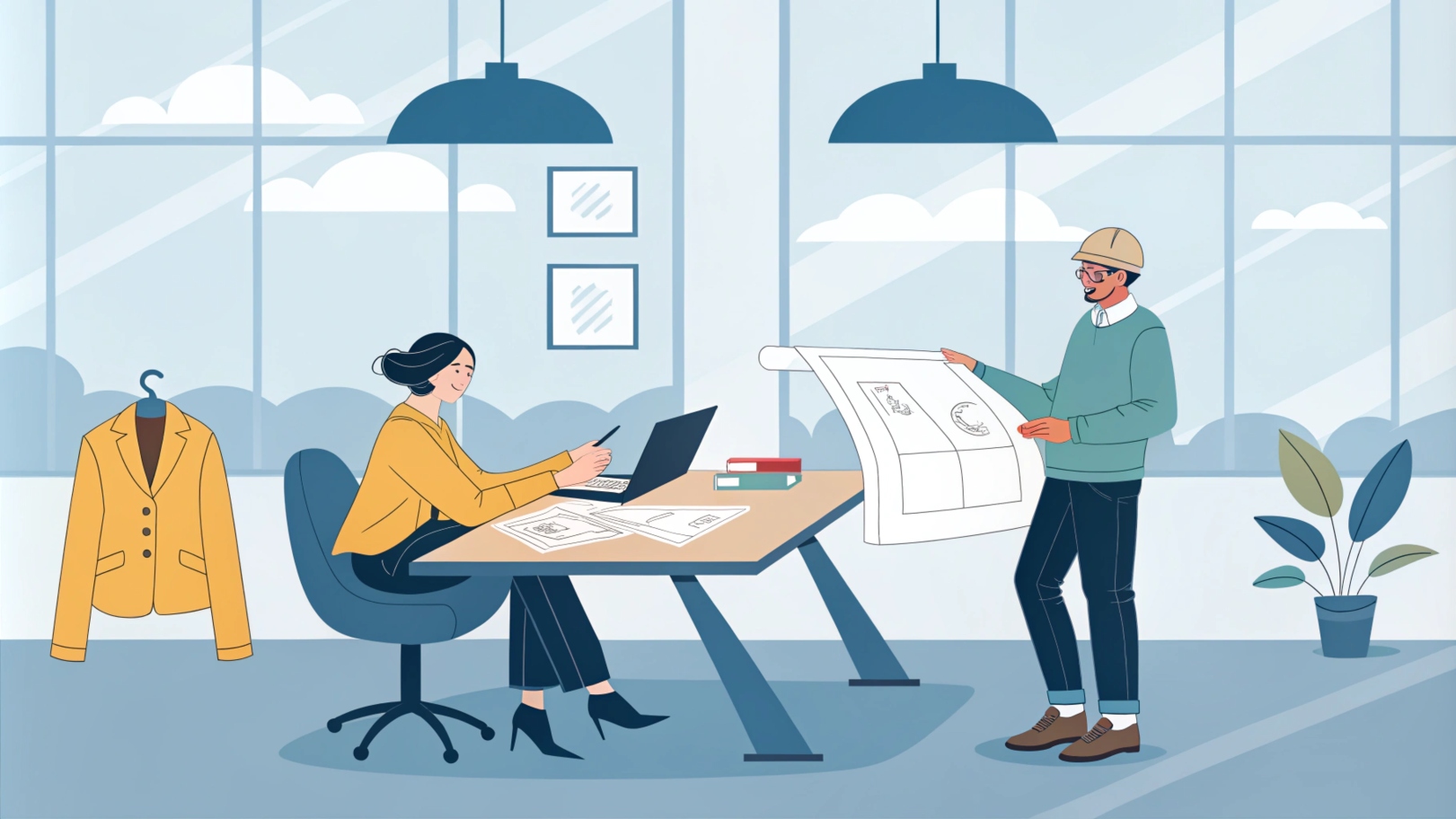Starting a custom clothing business can feel overwhelming. You might wonder about the initial investment and ongoing expenses. But with careful planning, you can turn your dream into a reality without breaking the bank.
Starting a custom clothing business typically costs between $5,000 and $50,000, depending on factors like design complexity, production scale, and marketing strategies1. This range covers essential expenses from manufacturing to branding and distribution.
When I first considered launching my custom clothing brand, understanding the costs helped me create a realistic budget and plan effectively.
Where do businesses get their clothes from?
Businesses often source their clothing from various places to meet their unique needs.
Businesses get their clothes from manufacturers, wholesalers, and sometimes directly from designers2. Choosing the right source depends on factors like quality, cost, and production capacity.
Common Sources for Clothing Businesses
-
Manufacturers
- Produce garments based on your designs.
- Offer customization options.
-
Wholesalers
- Provide ready-made clothing in bulk.
- Ideal for startups with limited design capabilities.
-
Designers
- Collaborate to create exclusive collections.
- Suitable for brands seeking unique styles.
Table: Pros and Cons of Each Source
| Source | Pros | Cons |
|---|---|---|
| Manufacturers | Customization, scalability | Higher initial costs |
| Wholesalers | Lower costs, quick availability | Limited customization |
| Designers | Unique designs, brand differentiation | Potentially higher costs, dependency on designer |
Choosing the right source ensures your clothing aligns with your brand’s vision and quality standards.
Do you need a manufacturer for a clothing brand?
Deciding whether to work with a manufacturer is a crucial step for any clothing brand.
Yes, you typically need a manufacturer for a clothing brand to produce your designs at scale3. Manufacturers handle the production process, allowing you to focus on design, marketing, and sales.
Benefits of Working with a Manufacturer
- Scalability: Easily increase production as your brand grows.
- Quality Control: Maintain consistent quality across all products.
- Expertise: Leverage the manufacturer’s experience and resources.
When You Might Not Need a Manufacturer
- Small-Scale Production: If you’re starting small, you might handle production in-house.
- Unique Craftsmanship: For highly specialized or handcrafted items, in-house production may be preferable.
Working with a manufacturer can streamline your operations and help your brand scale effectively.
How to work with a clothing manufacturer?
Building a successful partnership with a clothing manufacturer requires clear communication and strategic planning.
To work with a clothing manufacturer, research potential partners, prepare detailed design documents, negotiate terms, and maintain open communication throughout the production process4.
Steps to Collaborate Effectively
-
Research and Select
- Identify manufacturers that specialize in your type of clothing.
- Check their reputation, quality standards, and capacity.
-
Prepare Detailed Documents
- Create tech packs with precise measurements, materials, and specifications.
- Include sketches or prototypes to convey your vision clearly.
-
Negotiate Terms
- Discuss pricing, minimum order quantities (MOQs), and payment terms.
- Ensure timelines and delivery schedules are agreed upon.
-
Maintain Communication
- Regularly update and check in with your manufacturer.
- Address any issues or changes promptly to avoid delays.
Table: Key Considerations When Choosing a Manufacturer
| Consideration | Importance |
|---|---|
| Quality Standards | Ensures your products meet customer expectations |
| Production Capacity | Aligns with your order volume needs |
| Location | Affects shipping costs and turnaround times |
| Communication | Facilitates smooth collaboration |
| Cost | Fits within your budget |
Establishing a strong relationship with your manufacturer can lead to successful and efficient production cycles.
Can you make your own clothes and sell it?
Yes, you can make your own clothes and sell them, especially in the early stages of your brand.
Making your own clothes allows for complete creative control and can reduce initial costs5. However, it requires time, skill, and resources to produce quality garments consistently.
Steps to Create and Sell Your Own Clothes
-
Learn Basic Sewing Skills
- Invest time in learning how to sew and create patterns.
- Use online tutorials or take classes to build your expertise.
-
Create Your Designs
- Develop unique designs that reflect your brand identity.
- Experiment with different fabrics and styles.
-
Produce Samples
- Make prototypes to test your designs and make necessary adjustments.
- Ensure the quality and fit meet your standards.
-
Set Up an Online Store
- Use platforms like Etsy, Shopify, or your own website to sell your clothes.
- Take high-quality photos and write detailed descriptions.
-
Market Your Products
- Utilize social media, email marketing, and other channels to promote your brand.
- Engage with your audience to build a loyal customer base.
Pros and Cons of Making Your Own Clothes
| Pros | Cons |
|---|---|
| Full creative control | Time-consuming |
| Lower initial costs | Limited scalability |
| Ability to test designs quickly | Requires sewing skills and equipment |
Making your own clothes can be a rewarding way to start your brand, offering flexibility and direct control over your product line.
Conclusion
Launching a custom clothing business involves understanding the costs, sourcing the right partners, and deciding whether to handle production in-house or work with manufacturers. By carefully planning and leveraging the right resources, you can build a successful and sustainable clothing brand.







